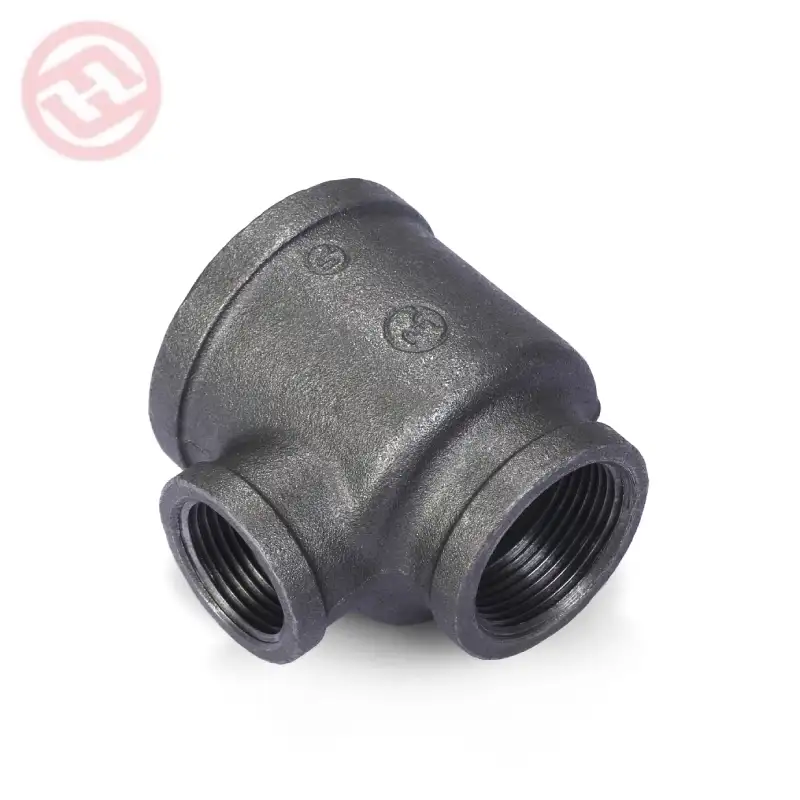Black pipe fittings, brass fittings, and stainless steel fittings are available in various dimensions and sizes, and their characteristics can differ based on the material composition and specific application requirements.
Here is a comparison of black pipe fitting dimensions with brass and stainless steel fittings:
**1. Material Composition:
- Black Pipe Fittings: Black pipe fittings are typically made from malleable iron or steel. The term “black pipe” often refers to carbon steel pipe, which is known for its strength and durability.
- Brass Fittings: Brass fittings are made from brass, an alloy of copper and zinc. Brass is corrosion-resistant and has good machinability.
- Stainless Steel Fittings: Stainless steel fittings are made from stainless steel, an alloy containing iron, chromium, nickel, and other elements. Stainless steel offers corrosion resistance and high strength.
**2. Corrosion Resistance:
- Black Pipe Fittings: Black pipe fittings are susceptible to corrosion over time, especially when exposed to moisture or harsh environments. Proper coating or treatment can enhance corrosion resistance.
- Brass Fittings: Brass is corrosion-resistant and well-suited for applications where exposure to water or corrosive substances is a concern.
- Stainless Steel Fittings: Stainless steel is highly corrosion-resistant, making it suitable for applications where resistance to rust and corrosion is crucial.
**3. Strength:
- Black Pipe Fittings: Black pipe fittings, especially those made from carbon steel, are known for their strength and durability.
- Brass Fittings: Brass fittings offer good strength but may not be as strong as steel or stainless steel fittings.
- Stainless Steel Fittings: Stainless steel fittings provide high strength and are particularly strong in comparison to brass fittings.
**4. Cost:
- Black Pipe Fittings: Black pipe fittings are often cost-effective, black pipe fitting dimensions making them suitable for various applications.
- Brass Fittings: Brass fittings can be more expensive than black pipe fittings due to the cost of the brass alloy.
- Stainless Steel Fittings: Stainless steel fittings tend to be more expensive than both black pipe and brass fittings due to the cost of the stainless steel alloy.
**5. Applications:
- Black Pipe Fittings: Commonly used in plumbing and industrial applications, especially for high-pressure systems.
- Brass Fittings: Widely used in plumbing, water distribution, and pneumatic systems.
- Stainless Steel Fittings: Used in various applications, including corrosive environments, food processing, and high-temperature applications.
**6. Threaded or Socket Weld Connections:
- Black Pipe Fittings: Often available with threaded connections for easy installation.
- Brass Fittings: Available with threaded or compression connections.
- Stainless Steel Fittings: Available with threaded, socket weld, or butt-weld connections.
**7. Sizes and Dimensions:
- Black Pipe Fittings: Available in a wide range of sizes and dimensions, conforming to industry standards.
- Brass Fittings: Offered in various sizes and dimensions to meet specific requirements.
- Stainless Steel Fittings: Available in a variety of sizes and dimensions, conforming to industry standards.
In summary, the choice between black pipe fittings, brass fittings, and stainless steel fittings depends on the specific requirements of the application, including factors such as corrosion resistance, strength, cost considerations, and the intended environment. Each material has its advantages and is suitable for different scenarios. It’s important to consider the material properties and industry standards when selecting fittings for a particular application.
